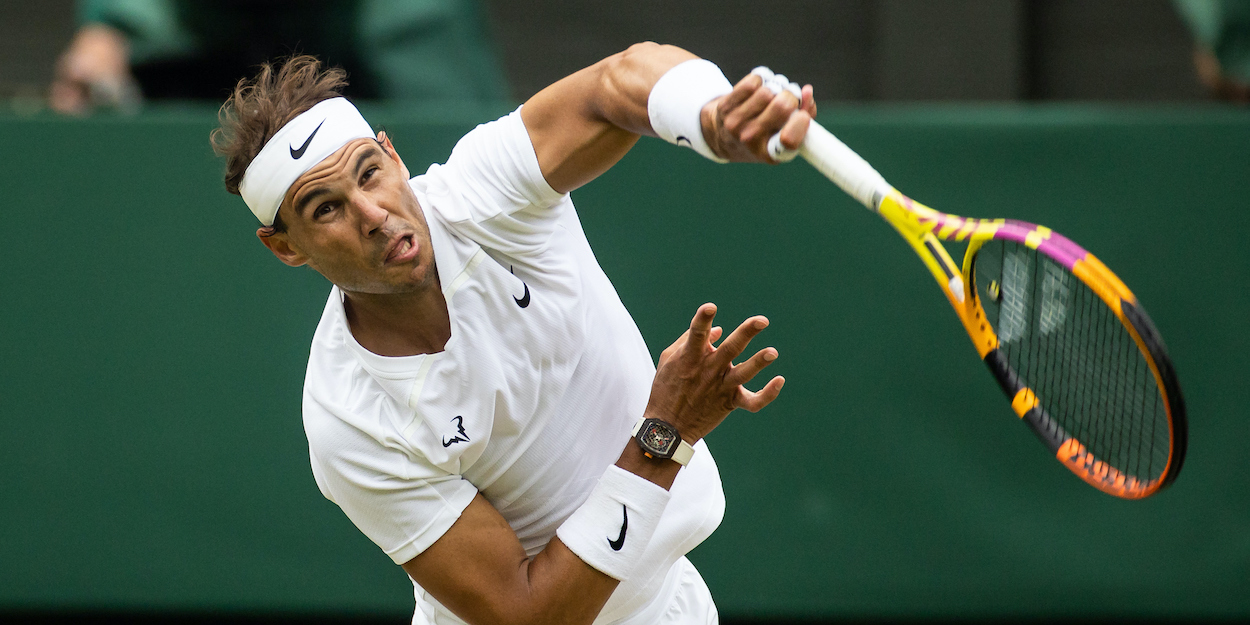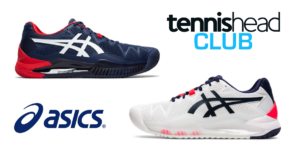
How to serve better – 8 serving ‘set up’ factors to consider
The most basic principle of the serve is to hit it in otherwise you’ll lose the point before it’s started, but once you’ve got a consistent action you may feel lost about your next steps towards a more potent serve.
Of course you can pick a target at random, but surely as a competitor you want to gain the upper hand at every opportunity.
So, allow Tennishead and Craig O’Shannessy of Brain Game Tennis to guide you on what you need to consider when lining up your serve.
Eight Serve Factors
Yes, eight may seem like a lot, but practice and repetition is the key for embedding these factors to become instinctive rather than thoughtful.
“Knowing this list takes the mystery out of serve location and it will only take a couple of seconds to “feel” these factors in a match once you have gone through the list a few times,” says O’Shannessy.
1 – Where does my opponent think I am serving?
Your opponent will return far better if they know where your serve is going. Make sure to mix up your serve just enough so that your opponent is uncertain where you are aiming.
“Condition your opponent’s mind to expect a serve to a specific location,” suggests O’Shannessy.
“And if you can get inside their mind and understand what they’re expecting, you’re winning the mental battle in the game.”
This is the first question you should always ask yourself before hitting a serve because it often carries the most weight of all the eight serve factors.
2 – Where do I want the ball to come back?
The majority of all serves come back into the court. O’Shannessy says to think of your serve not as an arrow that goes in one direction, but as a boomerang that you expect to come back.
By angling your serve differently in the service box you can have an effect on where the ball should come back, whether you want it on your forehand or backhand.
3 – What are the opponents strengths and weaknesses?
Here you have two options.
- Attack your opponent’s weaknesses immediately
- Open up the court and pressure them in the rally
Balance what you want to do and what makes your opponent most uncomfortable.
4 – What is the score?
This plays a big part in the pressure levels experienced by both players. In general, mix up your serve more in lower pressure situations when you are ahead in the score. Therefore, stick more to your primary patterns when the score is tighter and the weight of the points have greater importance.
5 – What is my favorite serve?
Again, balance is key. Do I serve where I want to or where my opponent does not want it? This will fluctuate throughout a match, and try to hold off your favourite serve until you really need it.
6 – What is my highest percentage serve?
At certain points in a match, getting a serve in is more important than anything else. Consider what your best middle strength first serve is to ensure that your opponent does not get a chance at your second serve.
7 – What are the natural conditions?
While subtle at times, conditions can be influential in a match as one of only a few external factors. Consider whether the sun affects your ball toss, which way the wind is blowing, and if the court you are playing on is sloped at all.
8 – Where is my opponent standing?
Most players never alter their return position. Use their location as a weapon against them. Use angles decisively when they sit deep and go big if they return close in.
In summary:
- The time between points is the ideal time to problem solve
- The more you think about the factors on the practice court the easier it will be in a match.
- It helps keep your mind on the other side of the net – less pressure on you.
- Soon you will “feel” what is right from knowing the factors and make good decisions in only a few seconds.
- Start with “where does my opponent think I am serving” and progress from there.
- Different factors will have different importance at certain times in the match
 For free access to Craig O’Shannessy’s complete courses on ‘25 Golden Rules of Singles‘ and ‘25 Golden Rules of Doubles‘, join thousands of other keen amateur tennis players and become a member of the Tennishead Club. Once you join we’ll immediately send you ground breaking coaching advice, a welcome pack including a full ASICS head to toe outfit including shoes, plus loads more. And it costs as little as £65/$97 to join with membership benefits worth over £600/$700 per year!
For free access to Craig O’Shannessy’s complete courses on ‘25 Golden Rules of Singles‘ and ‘25 Golden Rules of Doubles‘, join thousands of other keen amateur tennis players and become a member of the Tennishead Club. Once you join we’ll immediately send you ground breaking coaching advice, a welcome pack including a full ASICS head to toe outfit including shoes, plus loads more. And it costs as little as £65/$97 to join with membership benefits worth over £600/$700 per year!
 Craig O’Shannessy is the creator of Brain Game Tennis. For 20 years he’s been involved in tennis as a coach to players like Kevin Anderson and even Dustin Brown when he famously beat Rafa Nadal at Wimbledon. More recently Craig’s been working as a match analyst at Wimbledon and for the ATP Tour. He has also used the unique insights from his match analysis software dartfish to guide players such as Novak Djokovic with analysis of opponents and performances.
Craig O’Shannessy is the creator of Brain Game Tennis. For 20 years he’s been involved in tennis as a coach to players like Kevin Anderson and even Dustin Brown when he famously beat Rafa Nadal at Wimbledon. More recently Craig’s been working as a match analyst at Wimbledon and for the ATP Tour. He has also used the unique insights from his match analysis software dartfish to guide players such as Novak Djokovic with analysis of opponents and performances.
Visit BrainGameTennis.com to read the latest and best selling course ‘Getting Tight’ where Craig teams up with Jeff Greenwald to combine their specific skill sets to help you with the universal problem all players struggle with in matches.


